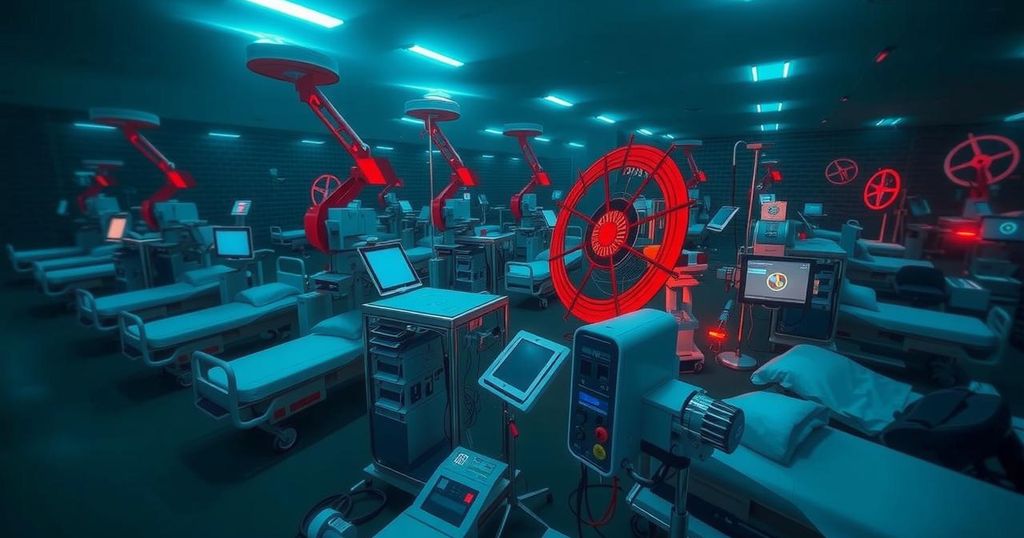The Imperative of Earthquake Preparedness in Hospitals: Leveraging Early Warning Systems for Enhanced Safety

Earthquake early warning (EEW) systems can enhance hospital safety by providing alerts before seismic events. However, the effectiveness of these early warning systems hinges on the preparedness and established protocols within hospitals. Research by Sandra Vaiciulyte highlights the challenges faced, including financial constraints and inconsistencies in protocol implementation across different hospital units.
Earthquake early warning (EEW) systems can potentially save lives in hospitals, yet their effectiveness heavily relies on the readiness of the facilities to integrate such protocols into their routine operations. This assertion is highlighted by Sandra Vaiciulyte, an interdisciplinary researcher at Universidad Nacional Autónoma de México, whose recent study sheds light on the challenges hospitals face in Mexico when responding to EEWs. Despite the existence of extensive early warning systems, many hospitals are hampered by financial and staffing constraints that inhibit the development of robust earthquake response protocols. The basic mechanism of EEW systems, like ShakeAlert utilized in the western United States, involves detecting seismic activity in real-time and providing alerts to residents seconds or even minutes before the tremors reach their locations. Mexico pioneered the adoption of a public EEW system in 1991, known as the Sistema de Alerta Sísmica Mexicano (SASMEX), which has effectively alerted citizens during past seismic events. However, effective integration of these systems into hospital emergency response strategies remains limited in many countries. Particularly in hospital settings where the stakes are high—due to the presence of vulnerable patients and expensive medical equipment—the need for well-defined and practiced protocols becomes critical. Vaiciulyte’s research indicates a lack of comprehensive data on hospital preparedness for earthquakes in Mexico. Understanding the interaction between EEW alerts and hospital protocols is essential, as the efficacy of EEW systems is contingent upon how well hospitals implement response strategies. Factors such as the structure of the hospital, the specific patient populations being served, and the operational dynamics of different medical units play a significant role in protocol design. Vaiciulyte’s exploratory interviews with hospital stakeholders in both the United States and Mexico revealed several insights. Concerns were raised regarding the effectiveness of current EEW systems and preparation levels among hospital staff. For instance, varying responses to alerts based on unit-specific protocols may impact the overall readiness of the hospital in a crisis. Additionally, while some hospitals in the U.S. had not yet developed significant EEW protocols, those in Mexico faced unique challenges concerning infrastructure and the understanding of alerts among visitors and staff alike. One case highlighted that not all hospital units received alerts uniformly, leading to a chaotic response in some areas. The need for strategic planning in response to EEW alerts is crucial. Micro-protocols tailored to different hospital departments can significantly enhance the capacity to protect patients and staff. Vaiciulyte emphasizes the importance of infrastructure, adequate training through drills, and resources to bolster an institution’s preparedness for seismic events. As noted by Elizabeth Reddy, professor at the Colorado School of Mines, a thorough understanding of how hospitals utilize these systems is vital as it is the operational success of such protocols that ultimately determines their effectiveness during an earthquake.
The importance of earthquake early warning systems has gained traction globally, particularly in countries prone to seismic activity such as Mexico and the United States. These systems function by detecting seismic waves and providing alerts to allow individuals to take protective actions. Nonetheless, for hospitals to fully harness the benefits of these warning systems, they must develop systematic and well-practiced emergency protocols. The research conducted by Sandra Vaiciulyte emphasizes the necessity for comprehensive data on hospital preparedness and provides critical insights into the various challenges faced in these high-stakes environments.
In conclusion, earthquake early warning systems offer significant potential to enhance hospital safety during seismic events. However, the effectiveness of these systems is closely tied to the hospitals’ preparedness and ability to implement structured response protocols. Through continued research and the implementation of tailored strategies, hospitals can better protect vulnerable populations during earthquakes, ultimately reducing casualties and improving emergency response outcomes.
Original Source: temblor.net







